Plecostomus is an inhabitant of freshwater and brackish water bodies. This amazing catfish is known for the fact that more than a day can do without water and move on the ground with the help of fins. During evolution, his body adapted to resistance to water currents - its sucker-mouth helps it not to float away with the stream, but to remain in the habitat.
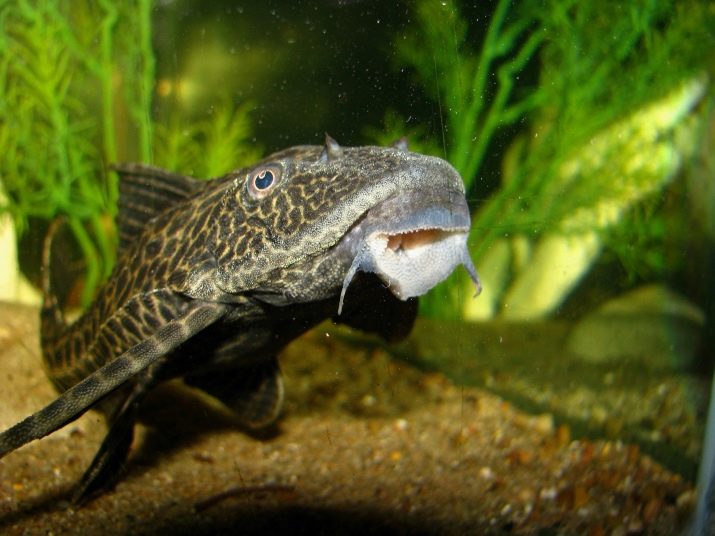
This species is also interesting because the fish is an excellent cleaner that removes plaque on the inside walls of the aquarium.
Description
Plecostomus is an unpretentious, hardy fish, almost omnivorous and characterized by high adaptive abilities. The homeland of catfish is the South American continent. The animal has such characteristic features as:
- triangular, flattened head shape;
- a body covered with several rows of bone plates, like chain mail;
- suction cup in the lower part of the mouth with lips equipped with horny spikes in the form of scrapers;
- small eyes are set high on the head, sometimes the catfish rolls them, and it looks like a wink;
- the fin on the back is quite high and continues to grow throughout the life of the plecostomus;
- the pointed first ray on the pectoral fins is connected with the glands that secrete poison, so it is not recommended to pick it up;
- a thin mustache located on both sides of the mouth - both the sense of touch and taste receptors;
- the body color of the body, as a rule, is light brown, and with an abundance of a dark pattern, it seems even darker, which allows the fish to disguise themselves as stones and foliage, against which it becomes invisible.
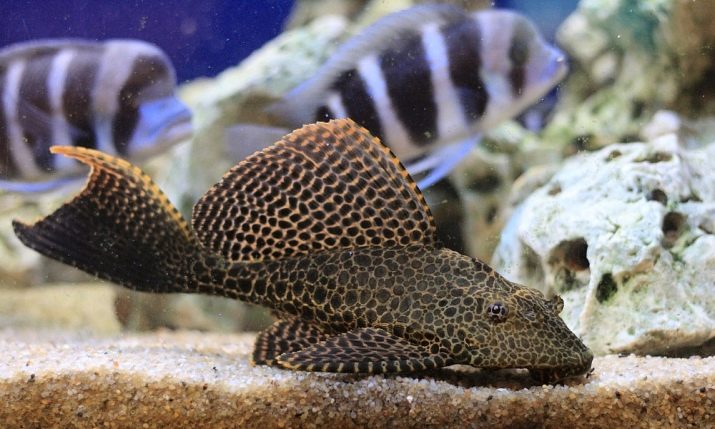
The fish can have impressive dimensions. In captivity, it grows to 30–38 cm.Larger specimens are also found in the natural environment - up to 40-60 cm long. True, there are also small catfish that do not grow to large sizes, their length varies from 10 to 15 cm.
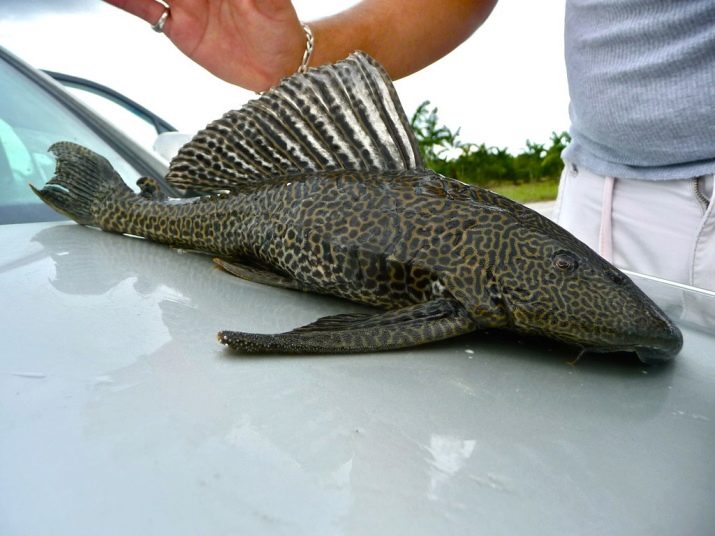
The life span of a water inhabitant is 14–16 years.
Kinds
In total, there are approximately 120 varieties of plectostomus vulgaris, but they are all outwardly similar in color, so sometimes it seems difficult to distinguish them. The most popular types include the following:
- golden plecostomus, having an almost jaguar, dark color against the background of a light beige or yellow torsoespecially saturated in males; in an artificial environment, the animal can grow up to 35 cm;
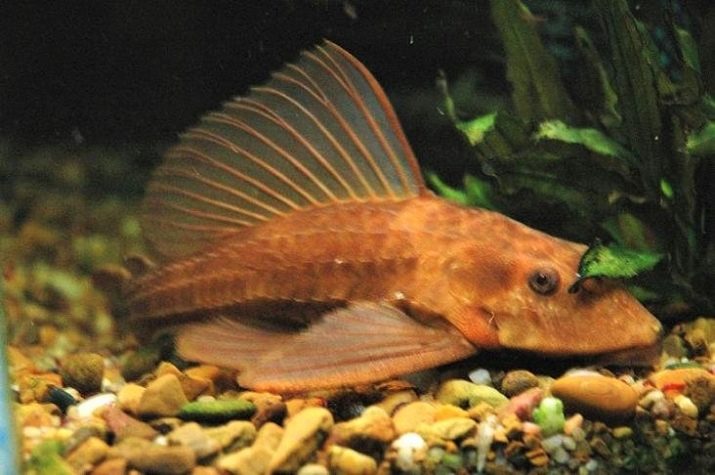
- albino - a species obtained by selection, which has a pale, almost white or yellow body with a mesh pattern; he prefers fresh water, the dorsal fin of a fish looks like a sail, in an aquarium it can reach 24–28 cm in length;
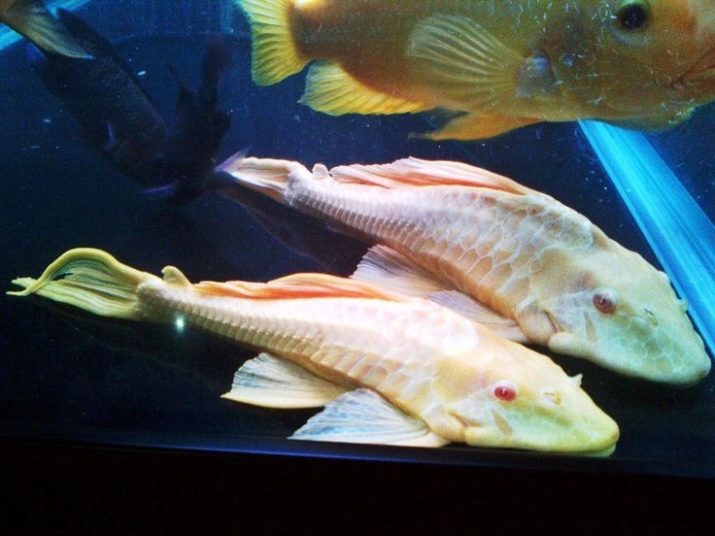
- bristlenos - a small aquarium fish in adulthood having 12-14 cm in length.
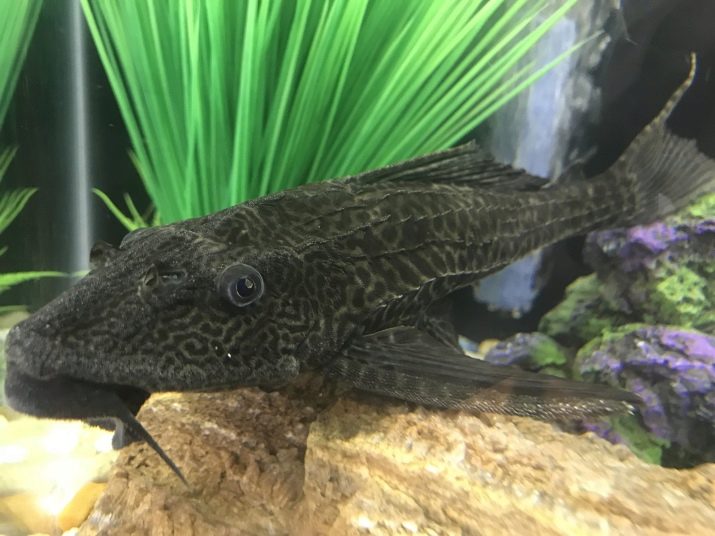
Ornaments of different types of plecostomy are different. On the body of some traced a pattern similar to the color of a zebra, leopard, interesting fish species of clowns.
However, a common characteristic feature of all fish is their common unique appearance, confirming their ancient origin, which is due to their unpretentiousness and quick adaptability to different living conditions.
How to contain?
The main difficulty associated with the content of plecostomus is the need for a large aquarium (at least 250-300 liters per young individual). When buying a small fish, one should not forget that catfish is growing rapidly, in a short time it can feel constrained.

This is one of the main conditions, but there are the following requirements:
- the aquatic environment for fish must be clean constantly, and for this it will be necessary to equip the reservoir with external and internal filtering devices, capable of not only regulating the water composition, but also eliminating the wastes of the wards;
- 1/3 weekly water change required;
- for catfish, the following water indicators are provided: hardness - not more than 24–25 units, acidity level –7–8 units, temperature - from +20 to +25 degrees;
- it is allowed to place small rounded pebbles, sand at the bottom, so that the underwater resident during digging in the ground could not damage his body;
- the aquarium must have a lid - the tank needs to be kept closed, since plecostomus like to jump out of the water;
- almost all types of catfish eat algae growing on snags, so their placement is necessary.
You can also plant fast-growing aquatic plants in the aquarium, for example, different varieties of aquarium ferns - thyroid, Thai or Indian, decorative Javanese moss, which will also make the design unusual, echinodorus and unassuming cryptocoryne bushes. The main thing is that the selected herbs have powerful roots. At the same time, they need to be seated not too thick so that the fish do not get entangled in them.
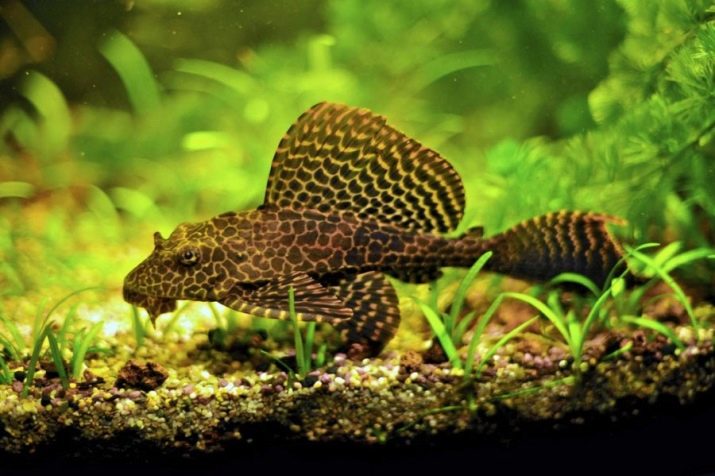
If the root system is weak, the plecostomus can easily pull the plant out of the ground.
In addition to snags, it is advisable to use all kinds of fragments that serve as a shelter for the fish. To do this, clay shards and pots with holes made in the bottom, cut parts of ceramic pipes and other devices are suitable. All this is done so that the catfish, accustomed to actively behaving at night, can rest in their burrows during the day, free from annoying lighting, which he cannot stand.
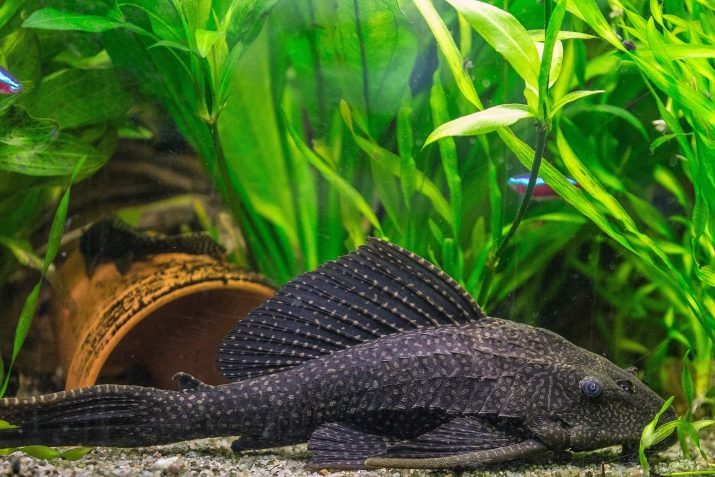
Diet and Feeding
Plecostomuses can be considered vegetarians, since they like any plant food more - the algae and moss that grow on snags are quite enough for the fish, but if there is a lack of food, the catfish can be taken for aquarium flowers.
To supplement the diet, they decided to give top dressing in the form of vegetables, for scalp softness boiled with boiling water. For this purpose, the tender flesh of zucchini, cucumber, salad leaves, spinach and cabbage are suitable.
Experts recommend periodically feeding pets live bloodworms, special flakes containing spirulina, and a tubule. The usual time for feeding is evening, but you can also give the fish food in the afternoon, but first turn off the light.
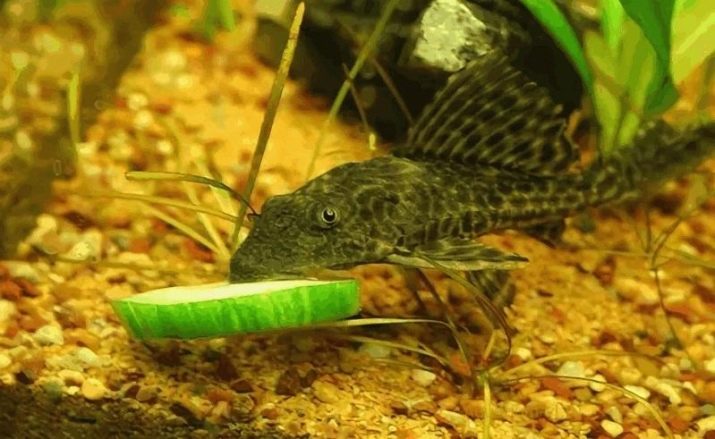
Being young, plekostomus willingly clean the walls of the aquarium, and actually eat this, but with age, the food offered by a person becomes preferable for them, they become lazy, abandoning their direct duties.
What species does the fish get along with?
Young catfish have a peaceful disposition and get along well with other fish. But unfortunately, as they grow older, the character of the fish does not change for the better, they begin to zealously defend their territory. Therefore, with males of their kind, the plecostomus can come into conflict and even arrange real brawls. But this does not prevent him from getting along peacefully with many fish and other neighbors whose main life takes place in higher layers of water.
Despite the peaceful nature, too small representatives of the underwater world cannot be hooked to the catfish, since it can take them for prey and eat it.
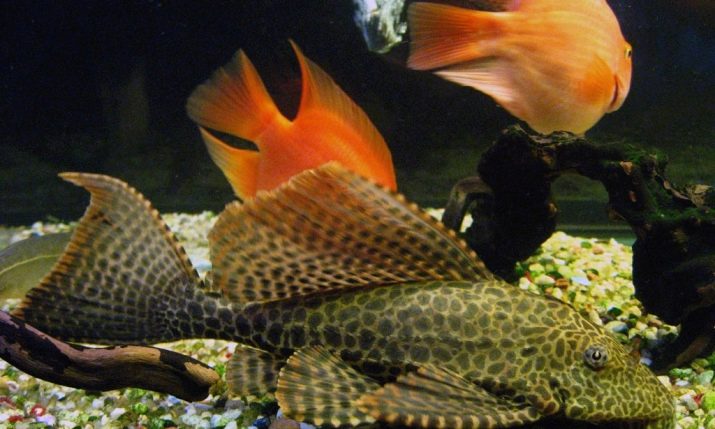
In general, the plecostomus maintains equal relations with almost all tropical exotics.
The best compatibility is observed between catfish and fish such as:
- cockerels;
- Pecilia
- rainbow fish;
- barbs
- bots;
- guppies;
- swordsmen;
- gourami.

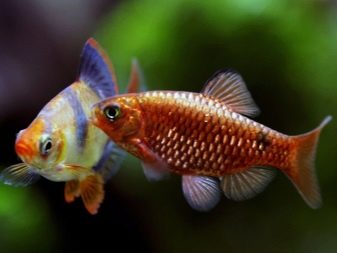
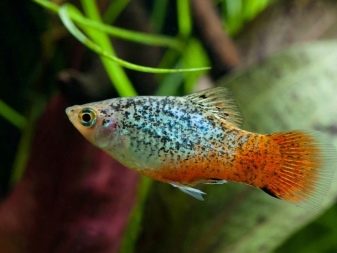

With a large displacement of the aquarium, a combination with predatory cichlids, carps, even shrimps of the genus Shrimps, necessarily large sizes, can be allowed, otherwise they will be perceived as food.
Among the good neighbors for the plecostomus are larger representatives - fish-knives, river dragons (arovans). An undesirable combination with sedentary fish - if the catfish is hungry, angelfish, discus, and other slow-moving inhabitants can seriously suffer. Plecostomus is a wonderful fish, for many lovers of this species becoming, almost, a member of the family.

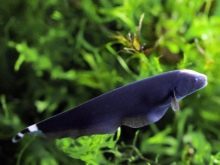
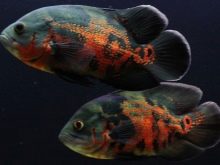
But one of the significant drawbacks is the inability to obtain offspring from her. To do this, it is supposed to create natural conditions in which spawning takes place, but, unfortunately, it is unrealistic to imitate them at home.
See how to distinguish pterigoplichitis from plecostomus in the video below.










